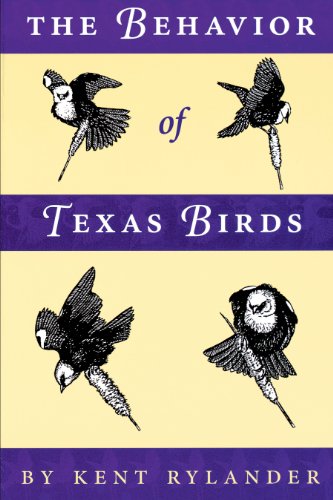Texas Birds – The Ultimate Guide for Beginning Birders!
New to birding? This post is for you! I wrote this to help you get to know the birds of Texas. Especially our year-round residents that are common throughout much of the state.
Start by downloading my free printable PDF of 10 Texas Backyard Birds. You can keep this handy one-pager by your binoculars!
This is by no means an exhaustive list. Over 600 species of birds have been recorded in Texas! Instead, I am prioritizing birds you are most likely to see in your yard, or out on a birding walk with a seasoned guide.
I’ve also included some of my favorite birding books and gear to help you get started.
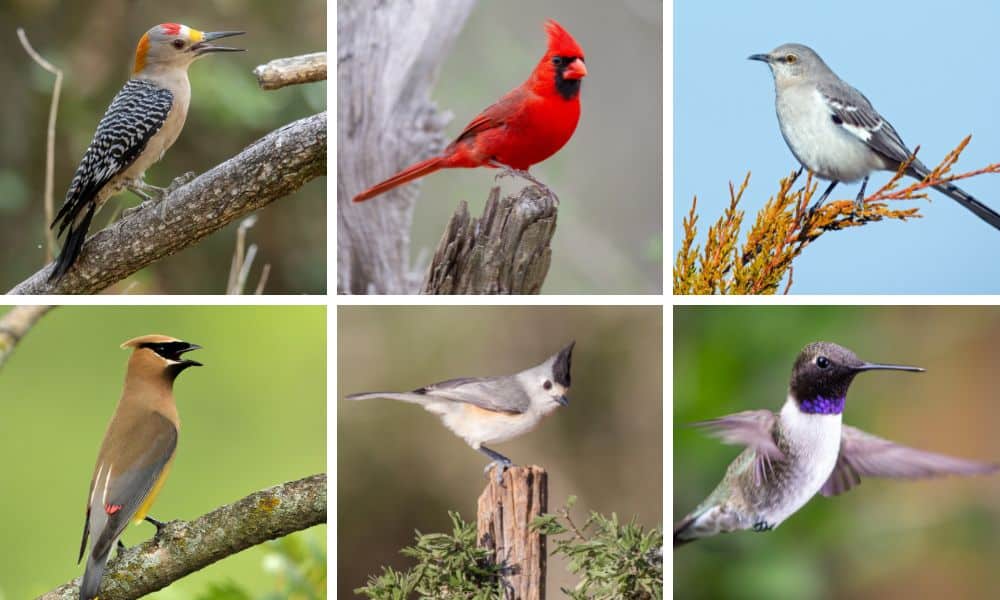
This post contains affiliate links. See my full disclosure.
Top 10 Texas Backyard Birds
These are the most common birds you will see visiting your backyard, especially if you have lots of Texas native plants, bird feeders, and water source!
These ten birds are year-round residents of suburban areas throughout much of the state, including south central Texas, where I live. If you are new to birding, this list is a great place to start, because these are the birds you are likely to notice first!
1. Northern Cardinal
Who doesn’t love the classic Northern Cardinal? I always enjoy seeing these bright red backyard visitors.
My squirrel-proof bird feeder has openings that are too small for these birds to get through, so I often see a Northern Cardinal couple (typically life-long partners!) foraging for seeds on the ground that have fallen from the feeder.
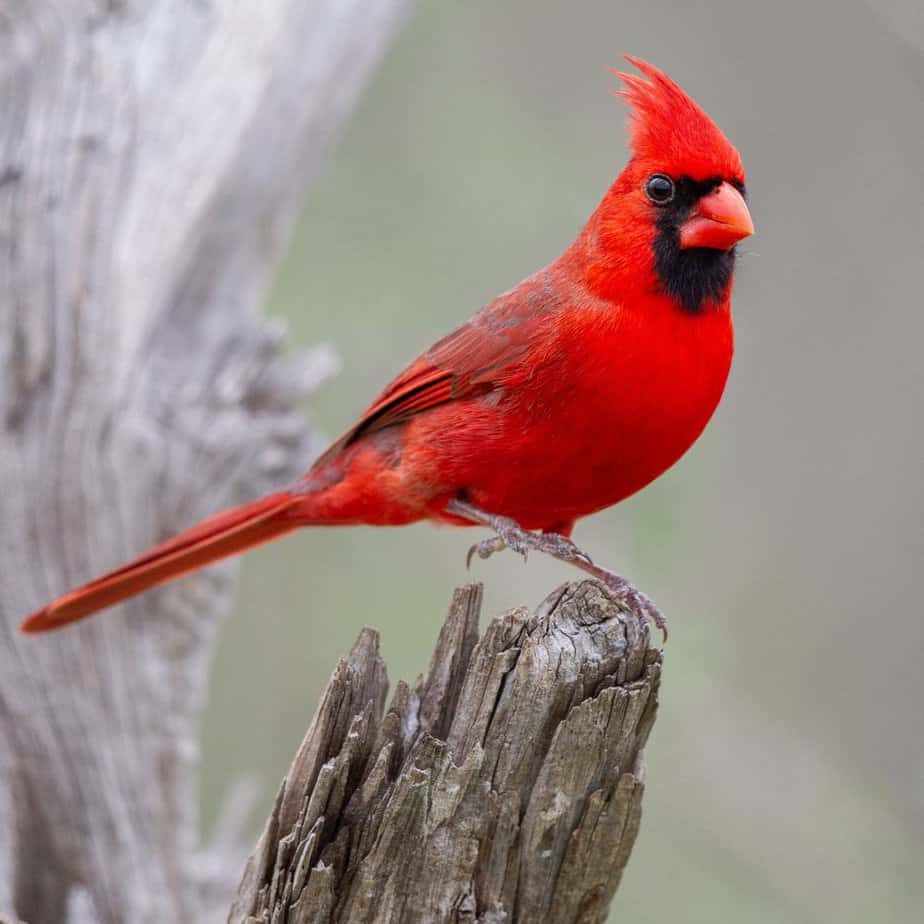
Fun Facts about Northern Cardinals:
- Males are red, females are brown.
- They typically mate for life (males often feed the female – so cute!)
- They like to sing from a high spot.
How to Spot Them:
- Males stand out clearly with bright red feathers. Their female partner is typically close by.
- Look for the males’s black mask and “mohawk.”
2. Carolina Wren
The small and plump Wren is quite possibly my favorite backyard bird! A pair of Carolina Wrens often make a nest in a flower pot on my patio each spring. This past spring, I got to witness five babies successfully fledge the nest. Check out the video here!
Carolina Wren’s can be found year-round in the Eastern half of Texas. They are similar to Bewick’s Wrens which can be found throughout the state and are more grayish in color.
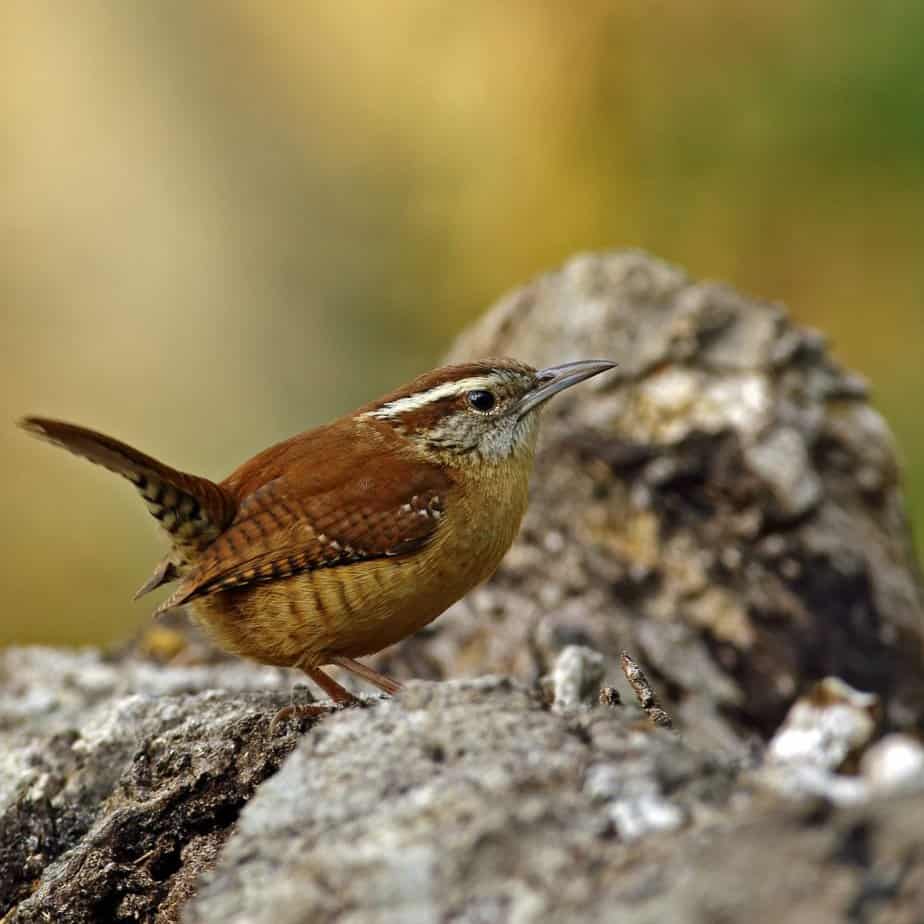
Fun Facts About Carolina Wrens:
- They like to nest in nooks and crannies (like flower pots!).
- You’ll often see them hopping around your garden looking for insects.
- They are small but mighty when it comes to singing. Their song is quite loud, and often the first you’ll hear in the morning.
- Their song sounds like “Teacher, Teacher, Teacher!”
- Carolina Wrens hold their short tail down when they sing.
- Like Northern Cardinals, they often mate for life.
How to Identify:
- Look for their tail pointed upwards.
- Notice the bright white stripe above eye.
- Carolina Wrens are more a golden brown while Bewick’s Wrens are more muted grey.
3. Carolina Chickadees
Carolina Chickadees are my bird feeder regulars. In fact, if you pay close attention, they tend to stop by around the same time each day, along with their good friends, the Black-Crested Titmouse (see #4). These birds bring a tree to life with their busy chatter when they arrive together!
This small round bird can be found throughout East Texas. It is similar to the Black-Capped Chickadee, which is found outside of Texas, in the Northern half of the United States.
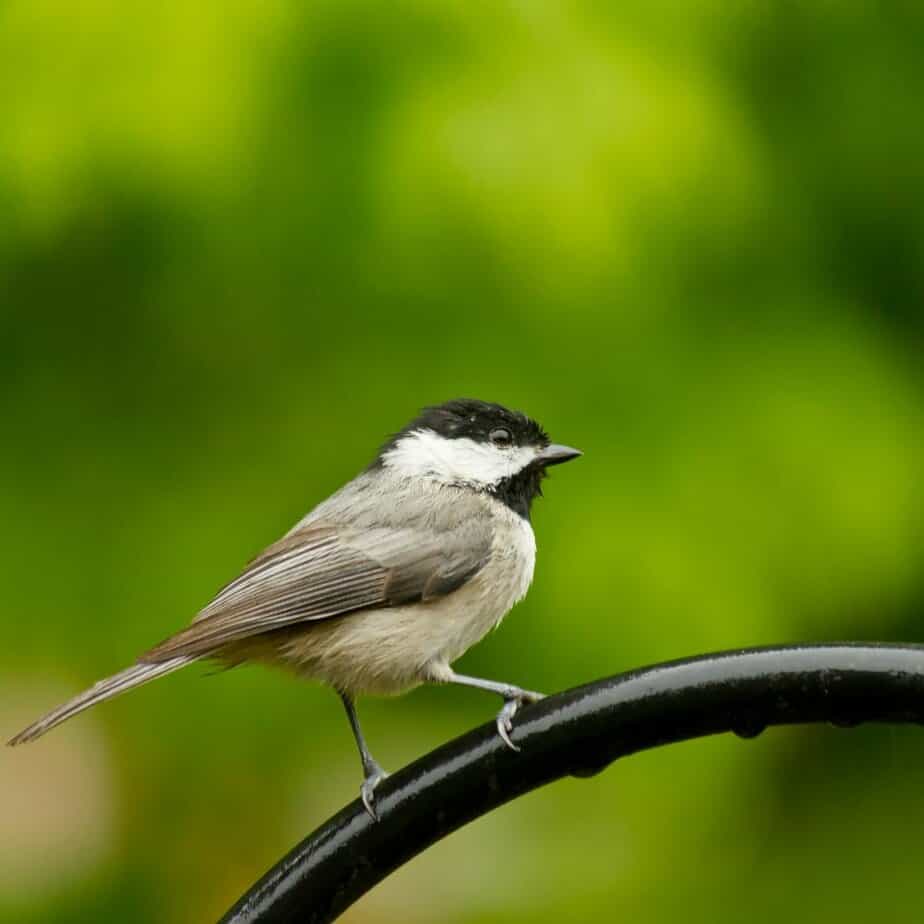
Fun Facts About Carolina Chickadees:
- One of their common songs sounds just like their name – “Chicka dee dee dee dee.” Another sounds like “Phoebe! Phoebay!“
- Named by James Audubon.
How to Spot Them:
- Look for the black cap and black collar.
- Typically travel in feeding groups of different birds (called “guilds”).
4. Black-Crested Titmouse
The little Black-Crested Titmouse is prominent throughout central Texas and can be found year-round in the western half of Texas.
I like to think of the Titmouse as the Chatty-Cathy of birds that visit my trees, typically in feeding groups with Chickadees.
They are closely related to, and often breed with, the Tufted Titmouse, which is found in the Eastern part of the state.
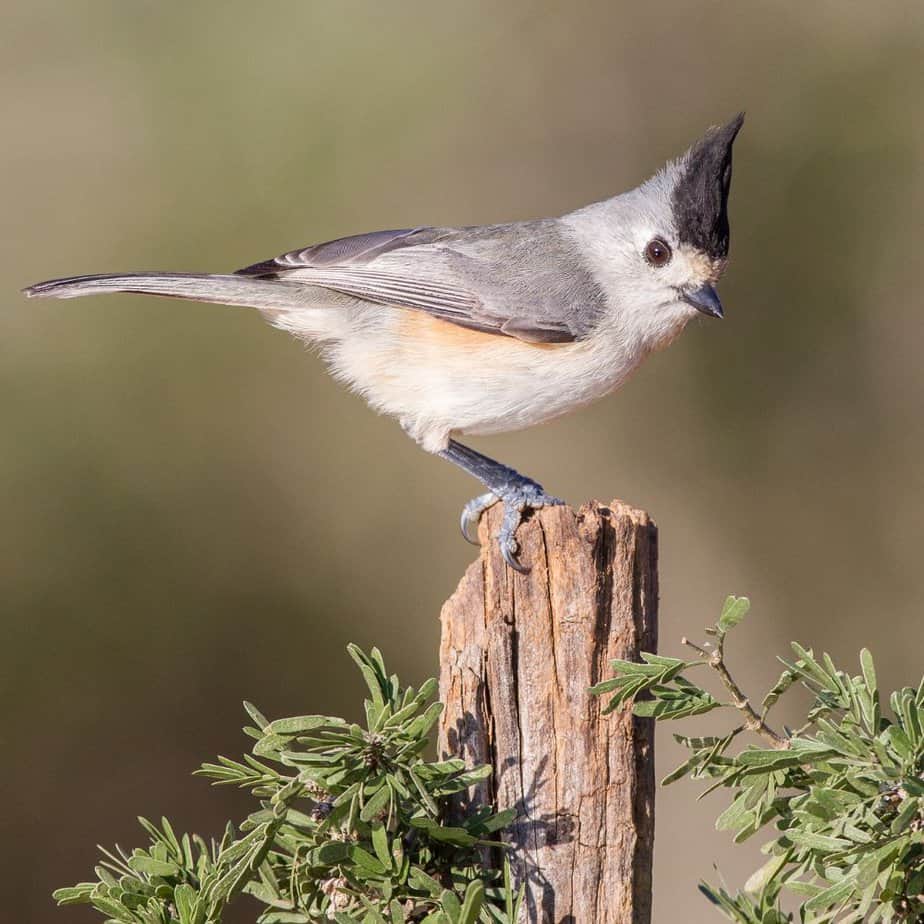
Fun Facts About Black-Crested Titmice:
- Can hang upside down on trees to reach insects!
- Their song sounds like “Peter, Peter, Peter!“
- They typically mate for life.
How to Spot Them:
- Look for the black mohawk on their head .
- Listen for their chatter in the trees!
5. American Goldfinch
These small birds with bright yellow bellies spend part of the year throughout Texas but migrate to Canada to breed.
The American Goldfinch is similar to the Lesser Goldfinch, which is common in South Texas year-round, and the one I’m most likely to see in my backyard.
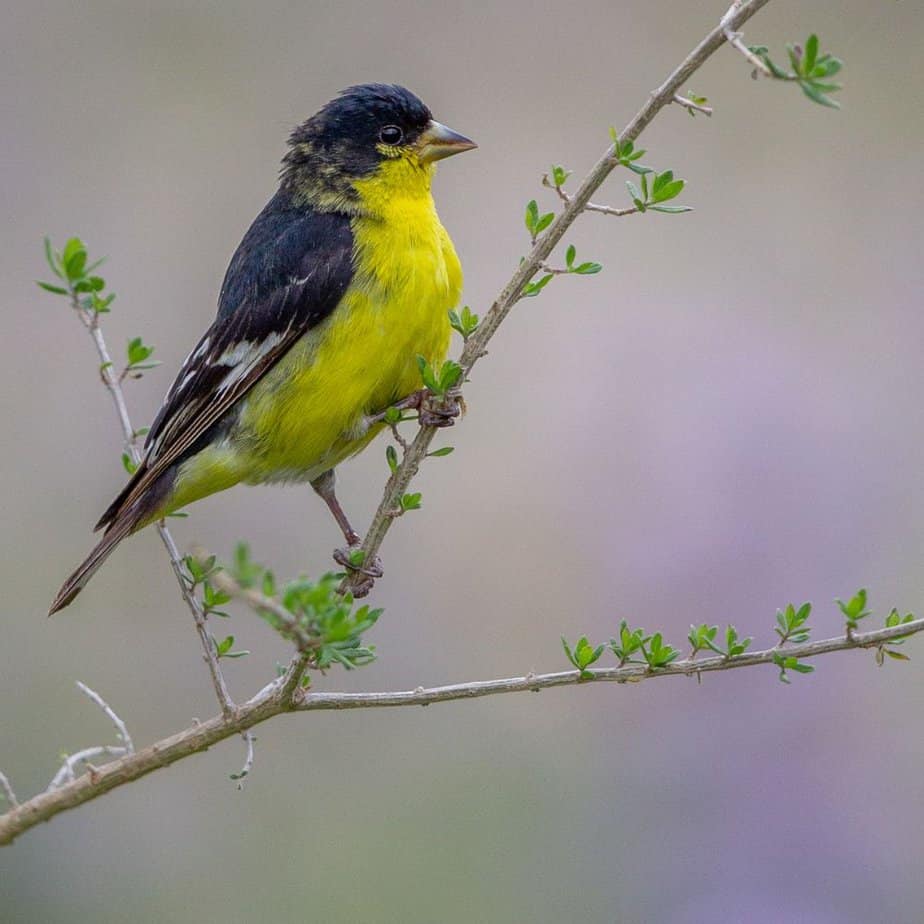
Fun Facts About American Goldfinches:
- Males are only bright yellow during breeding season. Over winter their coloring turns drab!
- They love to eat seed heads – so don’t trim back your flowers when they go to seed.
How to Spot Them:
- Set up a feeder with sunflower seeds – they love to visit feeders in groups!
- Easiest to spot in the spring and summer when the males are bright yellow with black wings.
6. Northern Mockingbird
Of course the Texas state bird needs to be on this list! This clever bird is also known as The King of Song. The males fiercely defend their territories and can produce 30 or more different songs in a single round of singing.
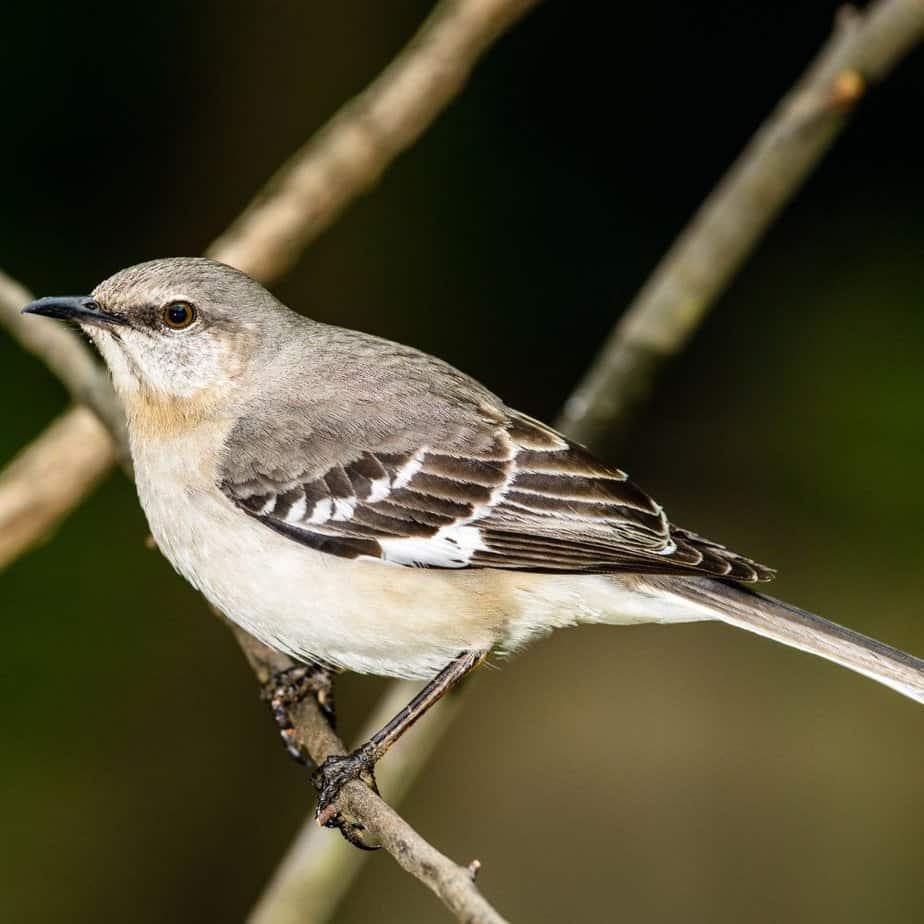
Fun Facts About Northern Mockingbirds:
- The official state bird of Texas (and four other states as well!)
- In addition to mimicking the songs of other birds, Mockingbirds can also mimic human-made sounds such as alarms and music.
- Mockingbirds are busy raising babies – they have been known to create up to 7 nests in a breeding season!
How to Spot Them:
- Listen for a bird song that keeps changing – likely a Mockingbird!
- Look up! They like to sing from a high-up point such as the top of trees, houses, and wires.
- Their long tail and white wing bars are especially noticeable when they take flight.
7. Red-Winged Blackbirds
I have not seen these in my backyard, but Red-Winged Blackbirds are year-round residents of Texas and one of the most prevalent birds in North America.
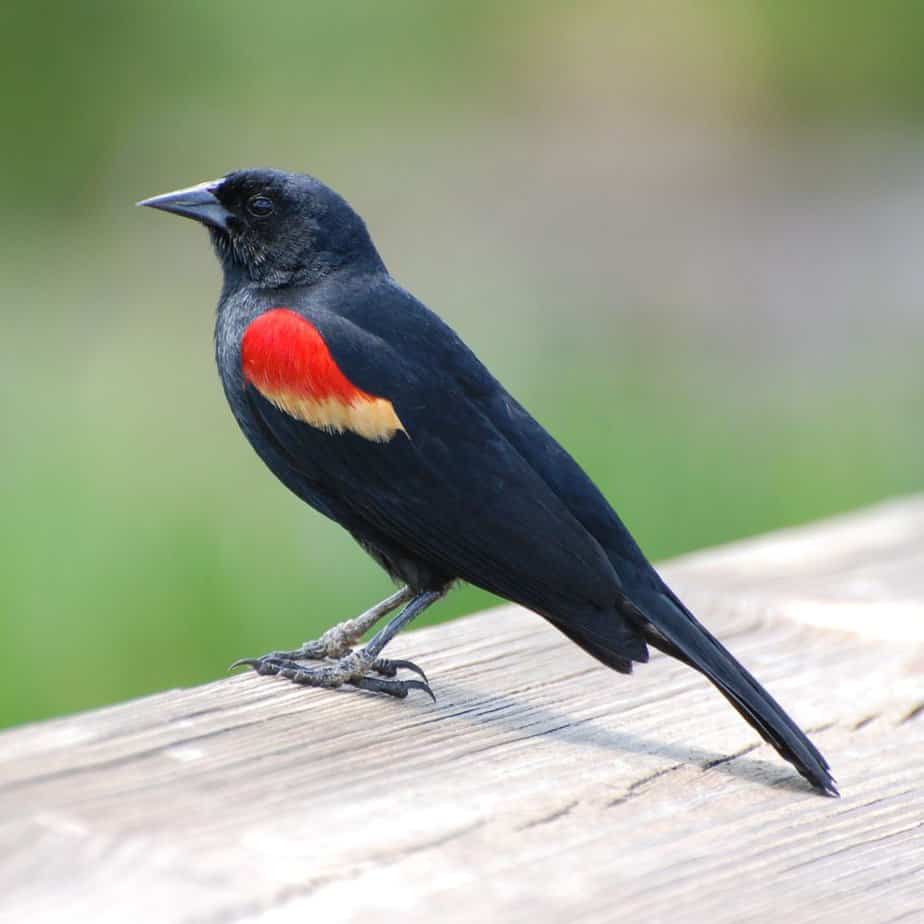
Fun Facts about Red-Winged Blackbirds:
- Only the males have the black, red, and yellow combo. Females look more like Sparrows with mottled brown and white feathers.
- Travel in large feeding groups over the winter.
- They often forage around the ground for seeds.
How to Spot Them:
- Easy to spot males in flight thanks to their bright red and yellow patches on the top of their wings.
- Often found near water sources with dense vegetation, such as marshes.
8. American Robins
This is the bird I remember most from growing up in Nebraska where they marked the beginning of spring with their arrival. Sadly, I have only seen one visit my yard in San Antonio, but I know they are present in our city, and prevalent throughout Texas.
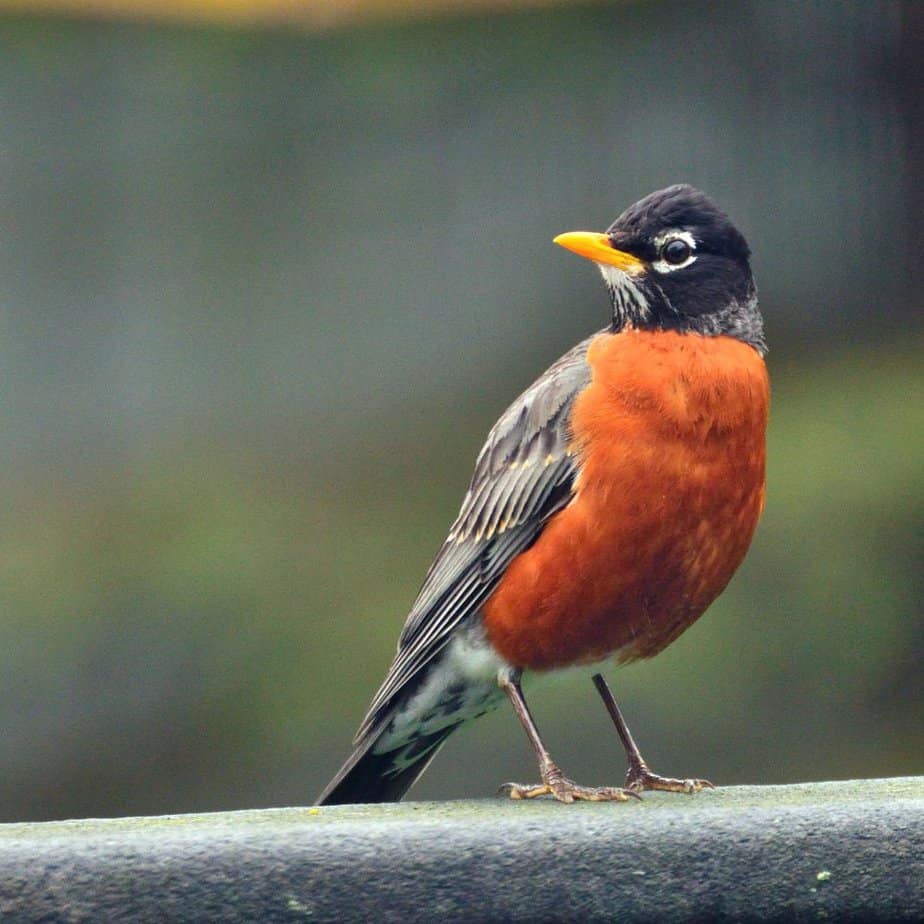
Fun Facts about American Robins:
- Robins love to hop along the ground, stopping to pull up a worm or other insect from the soil.
- They are able to locate food in the soil by sound!
- Earthworms make up around 20 percent of their diet.
How to Spot Them:
- Robins are larger and more robust than other songbirds.
- Look for their golden orange belly and yellow beak.
- They travel together in flocks over the winter.
9. Blue Jays
This large bird is often first heard thanks to its loud “jay! jay!” call. These raucous birds may be loud, but they are certainly beautiful!

Fun Facts About Blue Jays:
- Blue Jays are omnivores – eating anything from seeds to insects to mice. They are also known to eat baby birds, which makes them an unwanted visitor if other songbirds are nesting in your yard.
- They are known to store food such as acorns, by the hundreds, for eating later.
- Blue Jays are particularly intelligent and cunning birds.
How to Spot Them:
- Large birds – look for blue mohawk (crest) and black ring around their neck.
- Blue and white wings with black stripes.
- You’ll typically hear them before you see them!
10. House Finch
Another common feeder bird, House Finches are year-round residents in Texas, and throughout the United States.
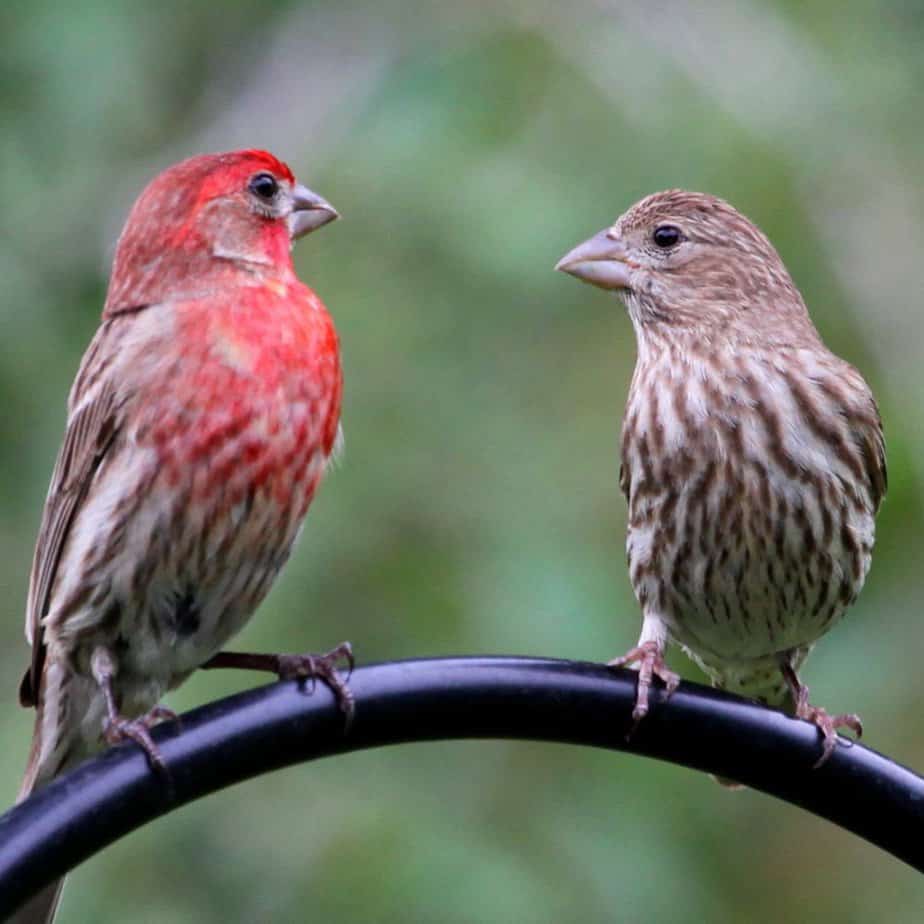
Fun Facts About House Finches:
- While common in backyards, the House Finch is not a Texas native. They are native to Western North America but expanded into Texas in the 1990s.
- Female males have a higher social status than males – they choose the nest site and defend it without help from the male.
How to Spot Them:
- Males have pinkish red coloring on head and chest. Females are brown streaked.
Download the Free PDF: 10 Texas Backyard Birds
I created a handy one-page PDF for you to print and keep by your backyard window or patio. It includes a thumbnail photo of each bird along with some tips for identifying them. Get it here:
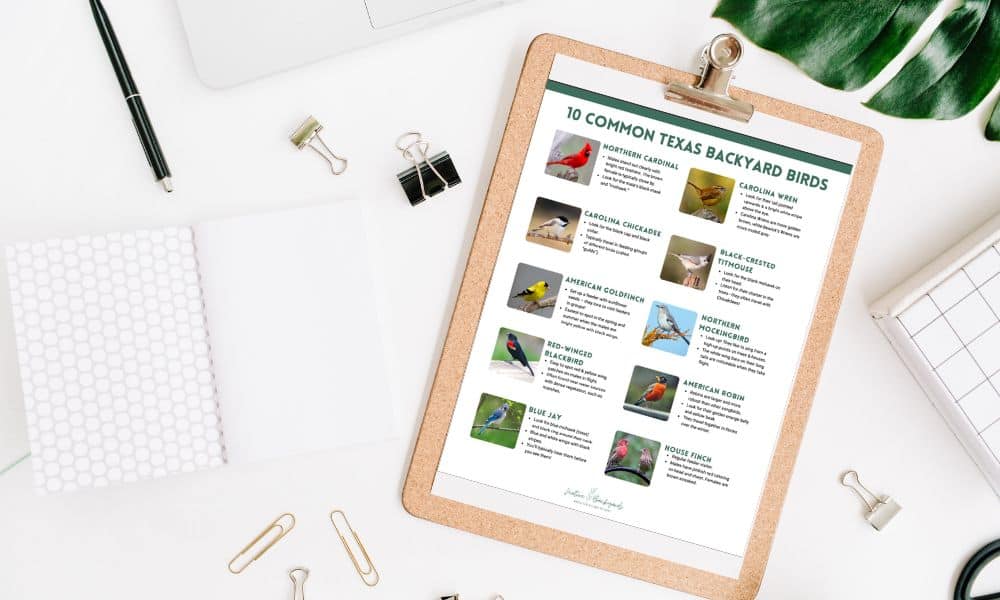
Unique Texas Birds
These are just a handful of the many species of birds that migrate through Texas. Unlike the backyard birds above, they only spend part of the year in our state. I chose these four because they are among my favorites and look so unique! If you are able to spot one, consider yourself lucky!
1. Painted Buntings
This “WOW” bird is so fun to spot for the first time! I’ve seen a few of these small birds in the Texas Hill Country. They are here during their summer breeding season. The males are rainbow colored, while the females are green and yellow.
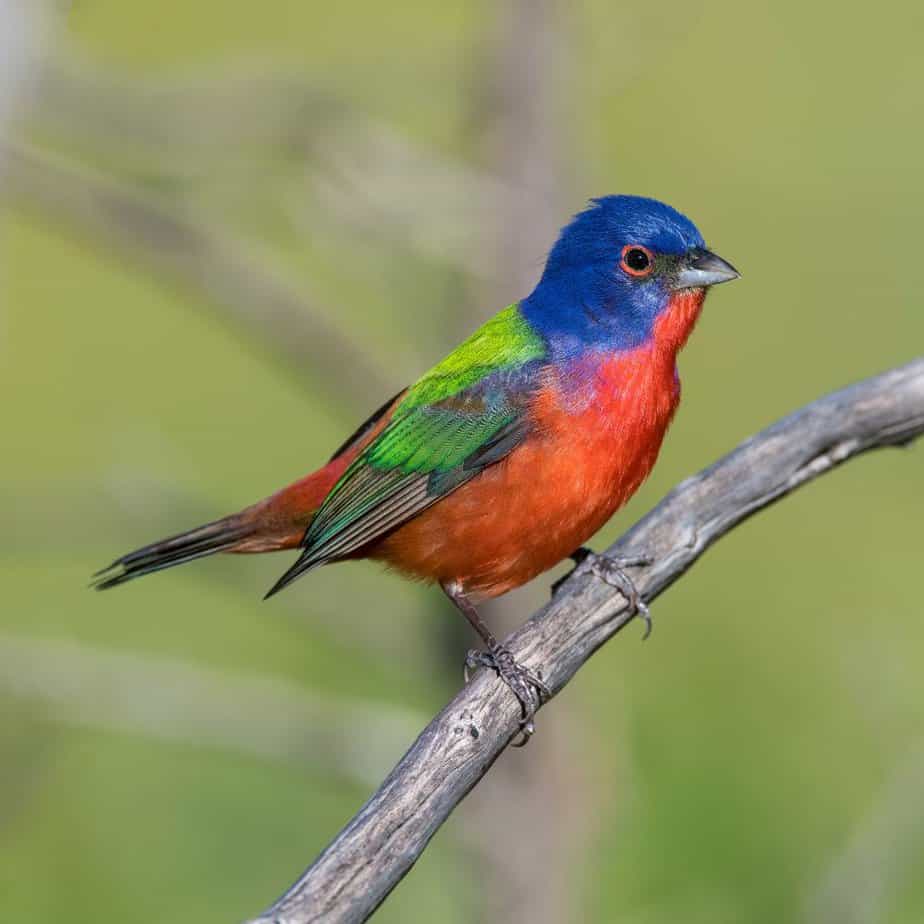
2. Green Jay
The beautiful Green Jay is most often spotted in South Texas. Not a migratory bird, it is a year-round resident along the Gulf of Mexico south to Central America. Similar to Blue Jays, Green Jays are large and loud birds!
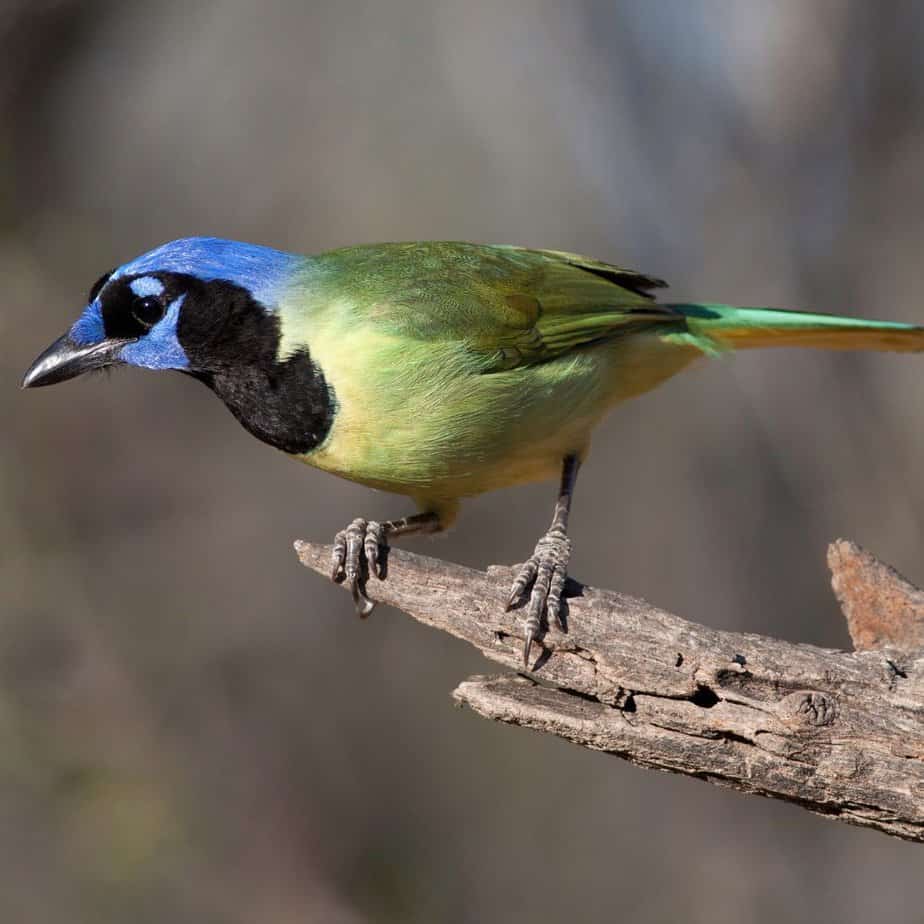
3. Scissor-Tailed Flycatcher
The outrageously long tail of this bird is a dead giveaway! Look for it perched on a fence or utility wire. These flycatchers use their tails to help them deftly capture insects midair. These graceful birds are summer residents throughout much of the state.
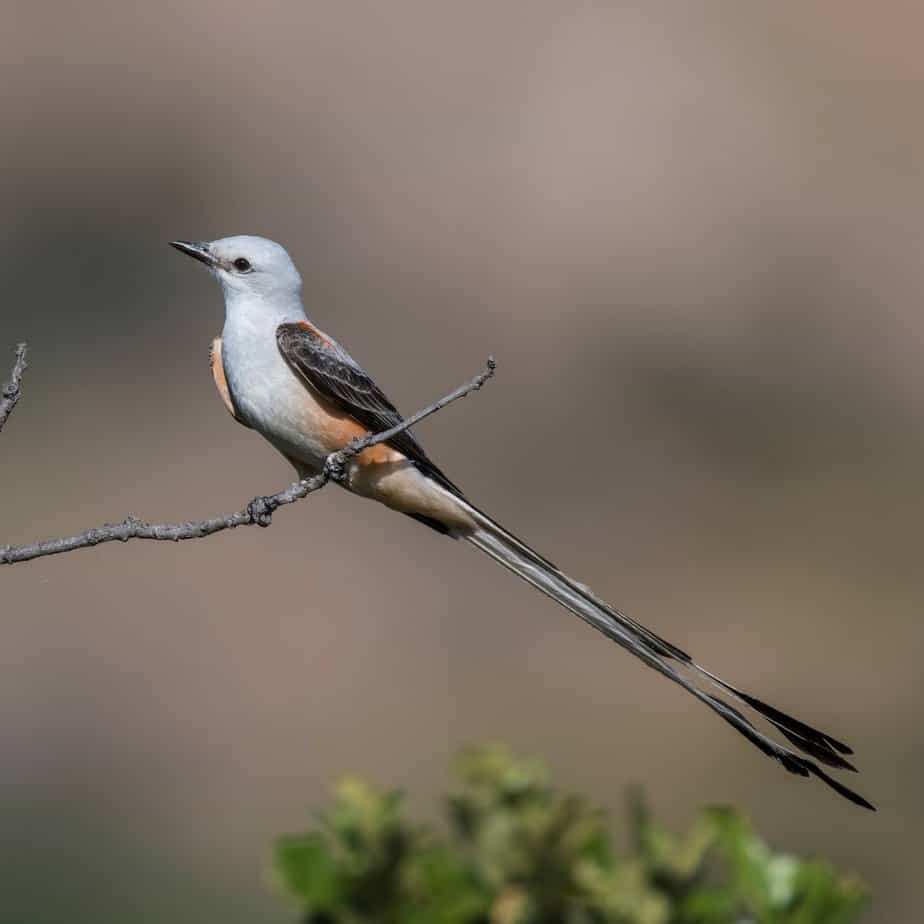
4. Cedar Waxwings
If you spot one Cedar Waxwing, you’re likely to spot many! This bird travels by the 100s to feast on berry-producing plants during Texas winters. They can strip a tree or shrub bare very quickly. While their black “Zorro” masks are a standout feature, Cedar Waxwings are named after the “waxy” red tips on their feathers.
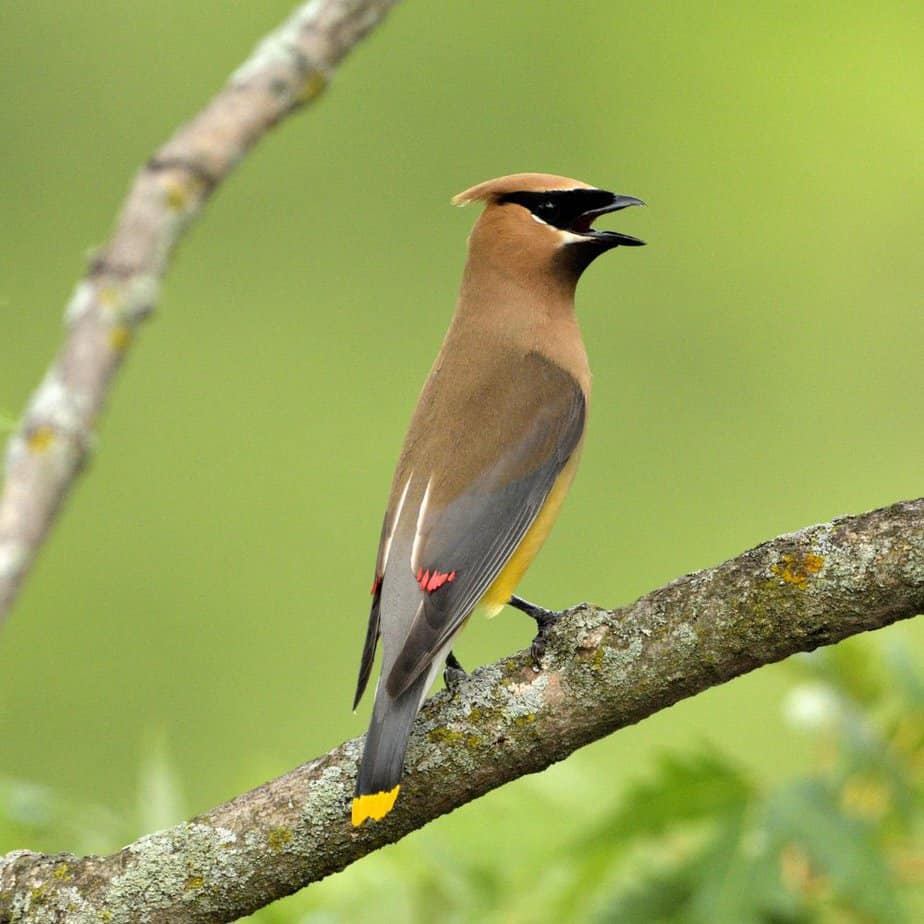
Texas Doves
Let’s not forget about these year-round Texas residents and common backyard visitors! I have a group of White-Winged Doves that like to hang out in my backyard and forage for any seeds that have fallen to the ground from my feeder!
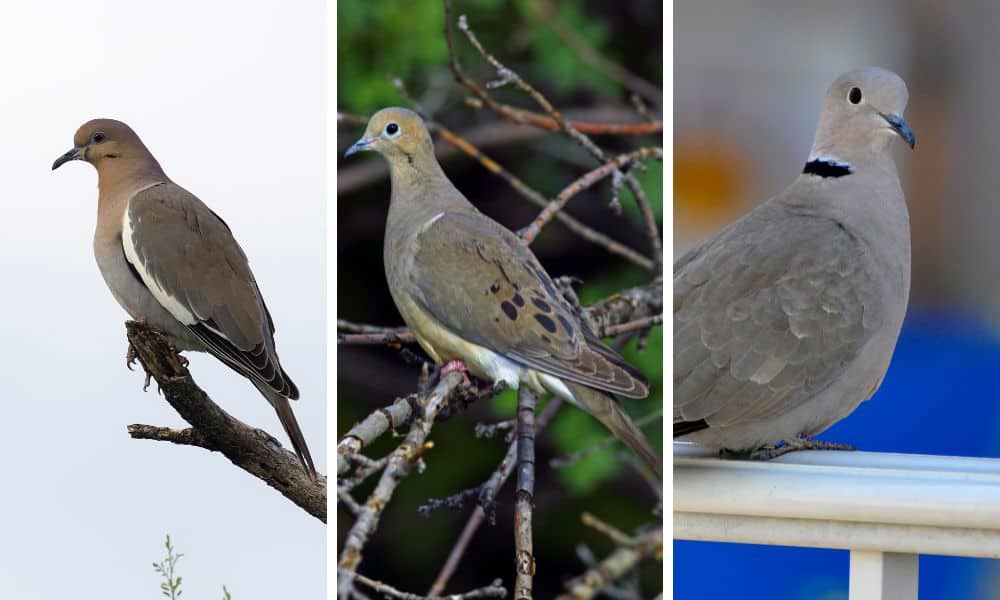
1. White-Winged Dove
Easy to identify by the white stripe that runs down the side of their wing. White-Winged Doves also have bright red eyes with light blue rings around them. My favorite part about these doves is their call. It sounds exactly like “Who cooks for you?”.
2. Mourning Dove
Aptly named, this dove makes a mournful sounding coo. Mourning Doves can be identified by the black spots on their wings. Their wings make a distinctive sound when they take off from a tree branch or telephone wire.
3. Eurasian Collared Dove
This bird is a newcomer to the United States, first appearing in Florida in the 1980s after first being introduced in the Bahamas. It is now found throughout most of the country. It is distinguished by the black ring behind its neck.
Texas Hummingbirds
Texas is a great state to view hummingbirds because we are located right along their spring and fall migration routes!
Here are a few you may see if you provide some of their favorite nectar producing plants, a hummingbird feeder, and lots of native plants to attract insects. Fun fact: did you know 80% of a hummingbirds diet is insects?
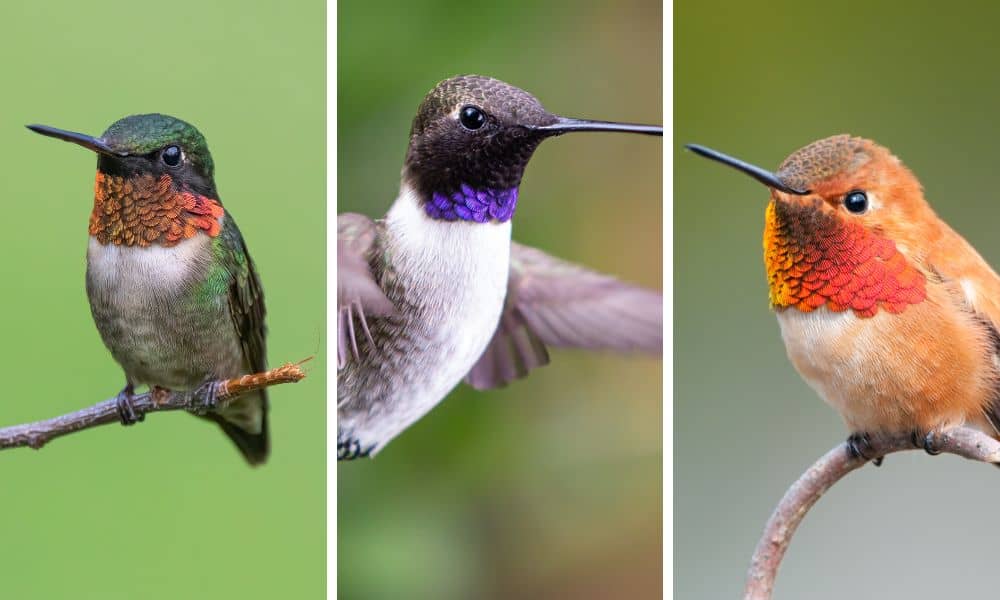
1. Ruby-Throated Hummingbird
These hummingbirds have a bright emerald green back. The males throat turns from dark to a brilliant red when it catches the light.
These hummingbirds can be spotted in the Eastern half of Texas during migration and breeding season. Fun fact: these tiny birds can cross the Gulf of Mexico in a single flight when they are migrating south for the winter.
2. Black-Chinned Hummingbird
Black-Chinned Hummingbirds can be found throughout the western 2/3s of the state during migration and are regular feeder visitors.
They have a green back similar to Ruby-Throated Hummingbirds. The males have a bright purple area below their black throats, which is only noticeable with direct sun.
3. Rufous Hummingbird
Small and mighty, Rufous Hummingbirds are known to aggressively defend feeders. They can be spotted by the “rufous” orangish brown bellies on the males. They can be found throughout the western part of Texas during fall migration.
Texas Woodpeckers
Woodpeckers are other awesome Texas birds you may have visit your yard! Different species are year-round residents in different parts of the state.
You may hear them before you see them – either from the ‘knock, knock, knock’ of their beaks on a tree or utility poll, or from their high-pitched call. I currently have a Golden-Fronted Woodpecker taking up residence in my backyard!
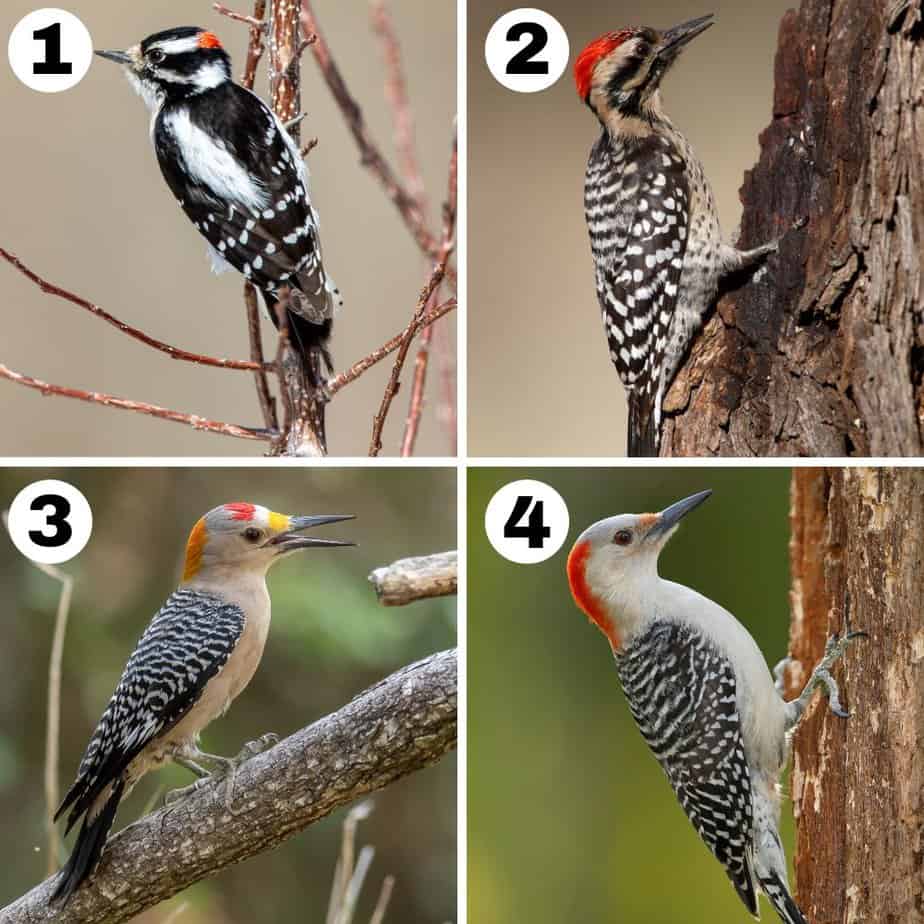
1. Downy Woodpeckers
This woodpecker is a year-round resident of the Eastern 1/3 of state and Texas Panhandle. It has a broad white stripe down its back and is smaller than other Woodpeckers.
2. Ladder-Backed Woodpecker
The Ladder-Backed Woodpecker is a year-round resident throughout much of the state. They have black and white “ladder” bars along their back. The males have a red crown.
3. Golden-Fronted Woodpecker
The Golden-Fronted Woodpecker has a yellowish breast, giving it its name. It also has a yellow patch between its eyes and the back of its head. It loves eating fruit and nuts in addition to insects. This Woodpecker is present year-round throughout central Texas.
4. Red-Bellied Woodpecker
The Red-Bellied Woodpecker is common in eastern Texas forests. It looks similar to the Golden-Fronted Woodpecker, but with bright red on the back of their head.
Texas Birds of Prey
Perhaps not the prettiest of Texas birds, you are likely to see these regularly circling above, or in the case of Vultures, along the roadside having lunch!
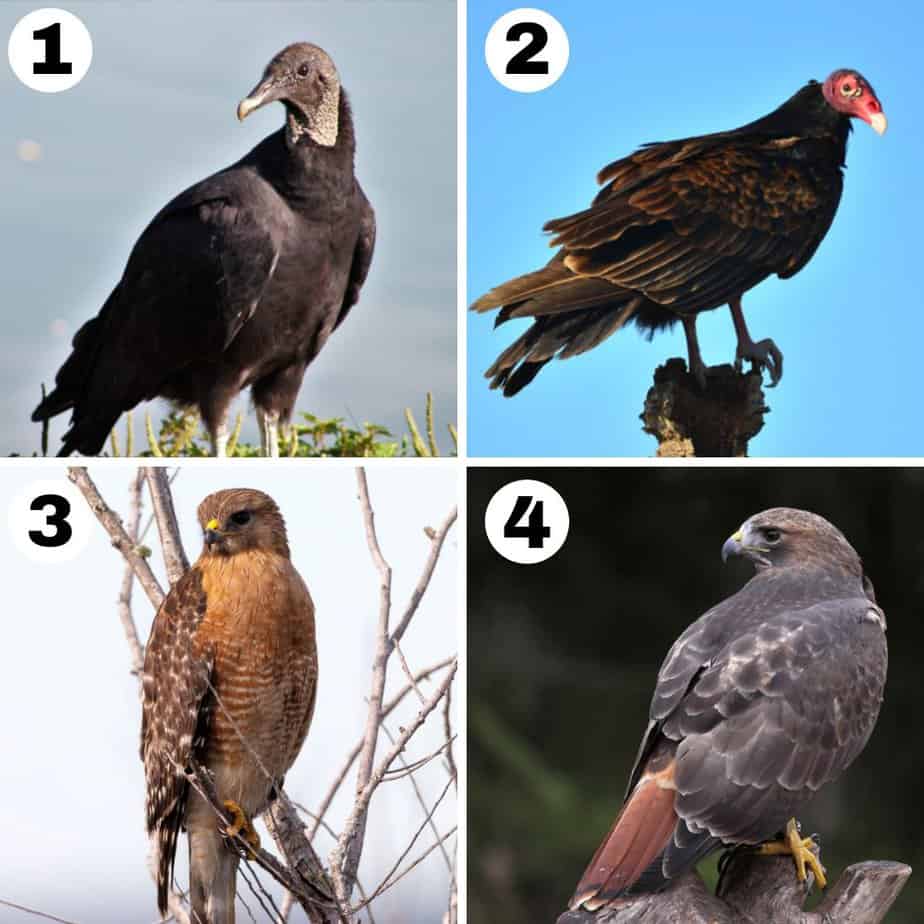
1. Black Vulture
Black Vultures have a blackish-gray head. Another way to tell them apart from Turkey Vultures is while they are in flight. The Black Vulture will have white tips on the bottom of its wings, while a Turkey Vulture has a band of white that runs all along the bottom of its wings. Black Vultures also tend to fly higher than Turkey Vultures.
2. Turkey Vulture
Adult Turkey Vultures can be identified by their bald red heads. They are common throughout the state during the summer. Turkey Vultures use their excellent sense of smell to find carrion to eat. Both types of vultures play a critical role in helping us keep our roadsides clean!
3. Red Shouldered Hawk
This hawk is found mostly in the Eastern part of Texas in forested areas. Adults have a distinctively banded (lined) tail and underwings in flight, along with red in the shoulder area.
4. Red-Tailed Hawk
If you hear a lot of birds making noise in your backyard, you may have a hawk nearby! The Red-Tailed Hawk is the most prevalent hawk throughout Texas. Adult hawks can be identified in flight by their bright red tail. They like to perch on high up spots to look for a potential meal.
“Less-Loved” Texas Birds
These Texas birds sometimes get a bad rap, but they have their redeeming qualities too! A couple of the birds were introduced to the United States from Europe and have now become prevalent. Most of these birds have made themselves right at home in urban areas.
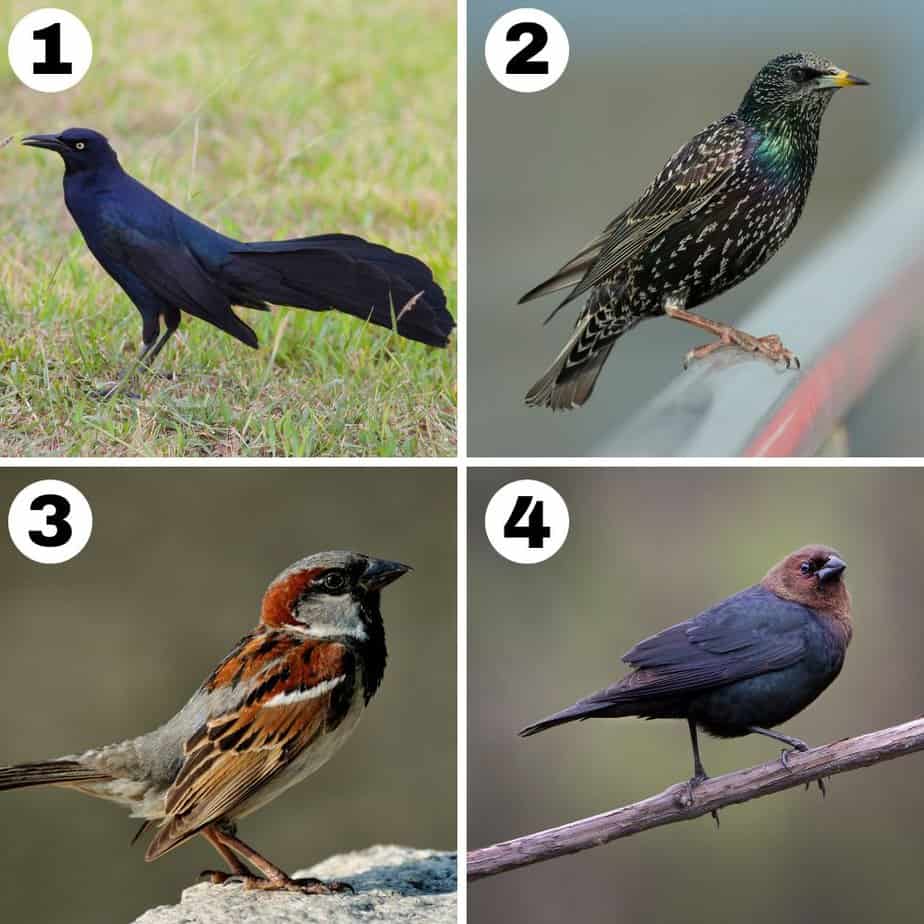
1. Great-Tailed Grackle
Grackles can be very loud when their flocks pack a tree or a telephone wire! These birds are year-round residents of the Southwestern United States. The male’s black feathers turn a beautiful iridescent purplish black in the light.
2. European Starling
Introduced from Europe in the 1890s, these blackbirds with yellow beaks like to travel in groups, sometimes with other birds such as Grackles. Similar to Grackles, they have a pretty iridescence and in winter are covered with white spots.
3. House Sparrow
Introduced from Europe in the 1850s, the House Sparrow is now one of the most common birds in North America. It is also one of at least 15 different species of Sparrows found in Texas.
4. Brown-Headed Cowbirds
Year-round residents throughout Texas, Cowbirds have a habit of laying their eggs in the nests of other birds, typically at the expense of the other bird’s chicks. For this reason there are programs to trap Cowbirds in natural areas around Texas.
My Favorite Texas Birds Books
One of the best way to learn about birds is with a good bird guide! Here are a few of my favorite:
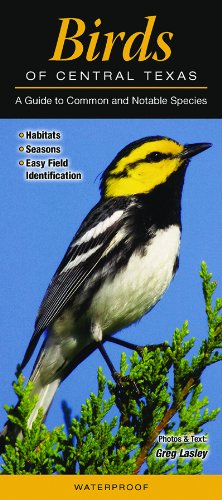
Birds of Central Texas
This laminated pocket guide was my go-to source when I first started birding in my backyard, and it still is a favorite resource today!
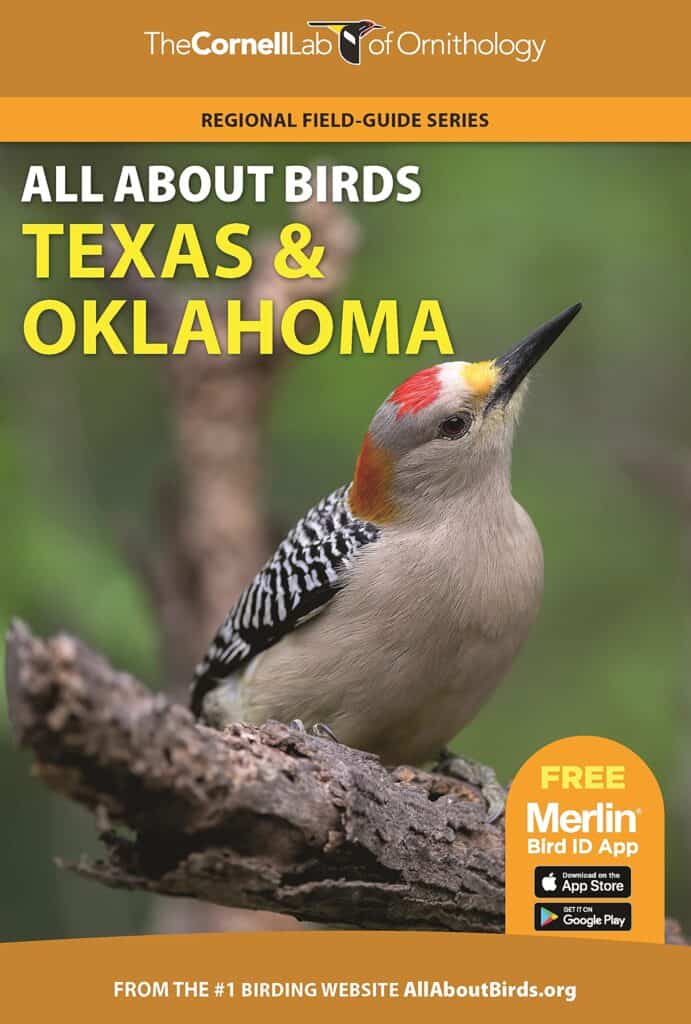
All About Birds Texas & Oklahoma
This guide has great photos for each species that depict males, females and juveniles (which can often look very different). It also has a and range map for each species. It is a helpful range map for each species.
My Favorite Birding Supplies
Want to attract more birds to your backyard? Plant lots of Texas native plants, forgo pesticides to create a habitat with more insects (a big part of birds’ diets), and add a feeder! Here are my favorites:
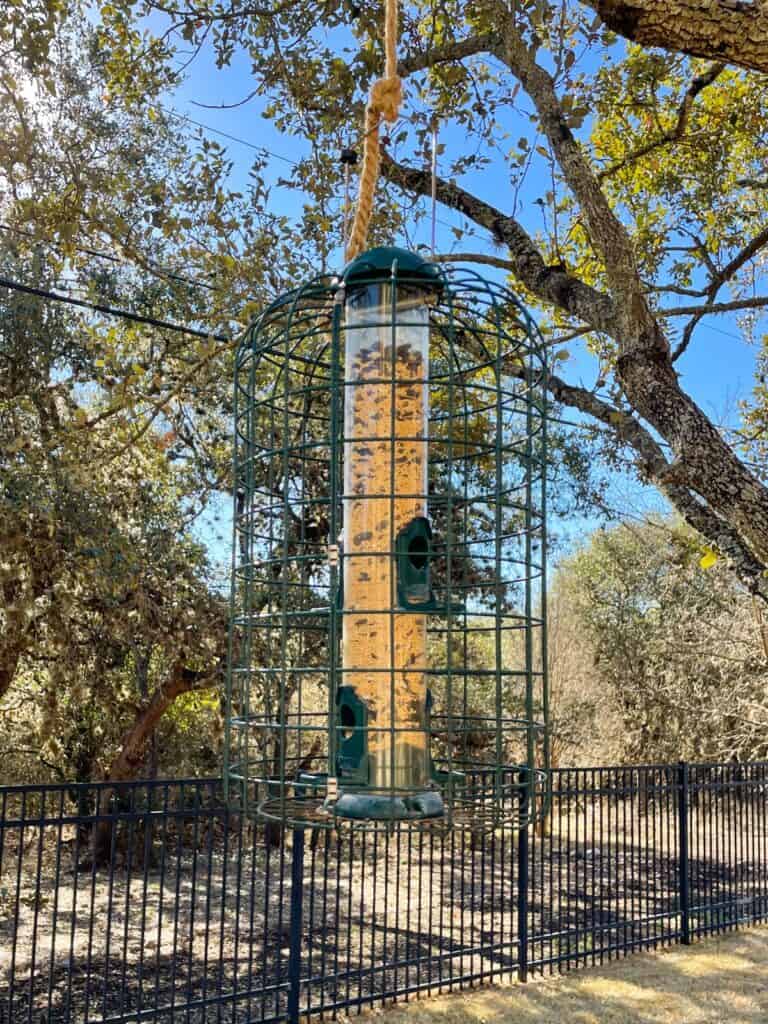
This bird feeder truly is squirrel-proof (and my squirrels have certainly tried it out!). It allows smaller songbirds to access the feeder between the bars.
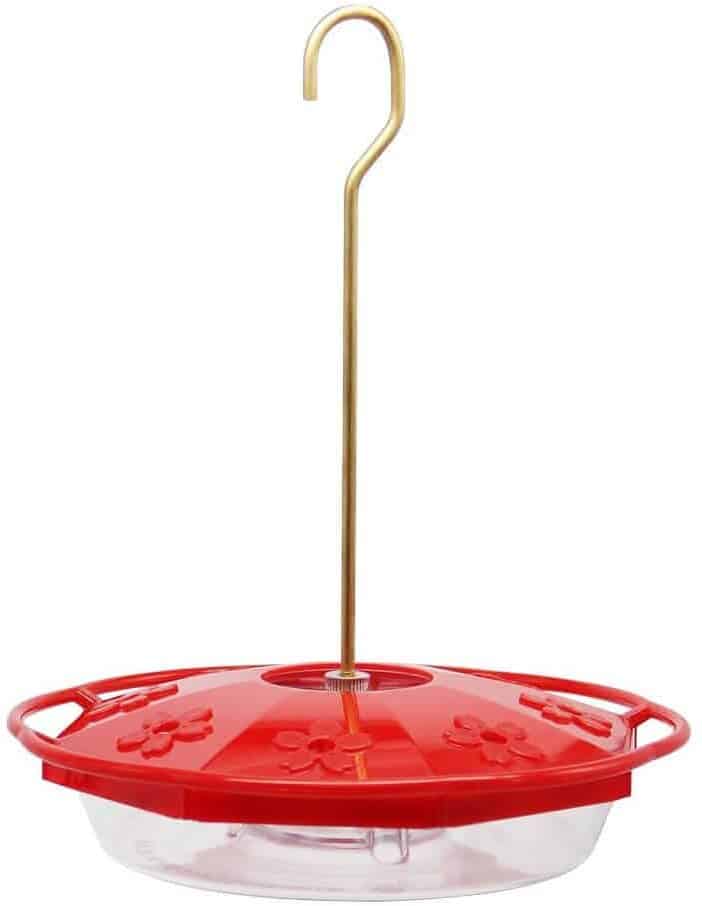
My Favorite Hummingbird Feeder
I love this plastic hummingbird feeder because it couldn’t be easier to clean and refill. Just pop off the top lid and fill the basin with sugar water (boil 1 c. of sugar with 4 c. of water).
Once you’ve created a habitat for birds in your backyard, you should register your yard as a Certified Wildlife Habitat with the National Wildlife Federation. Here’s how!
Article photo source: Canva.com
Pin this to spread the word about Texas birds!
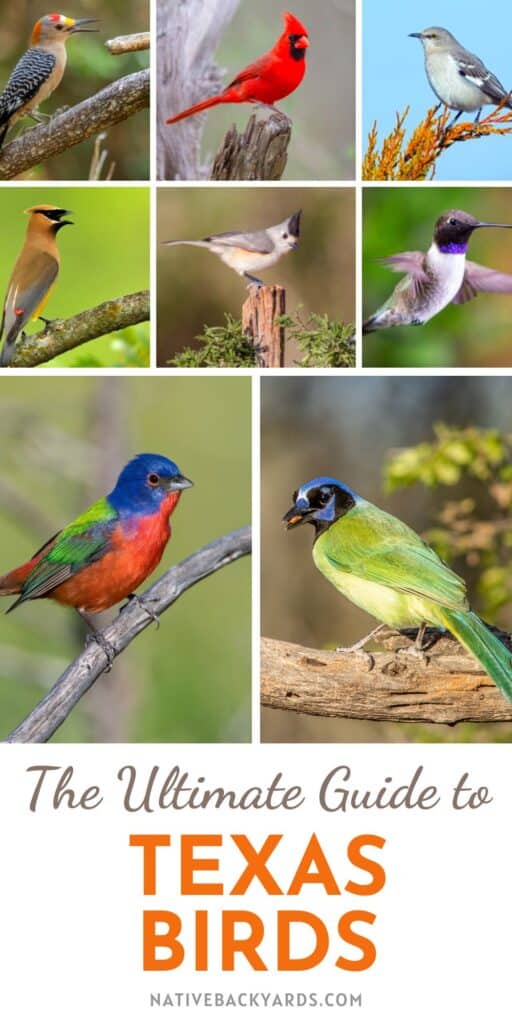
Learn About More Texas Insects and Wildlife!
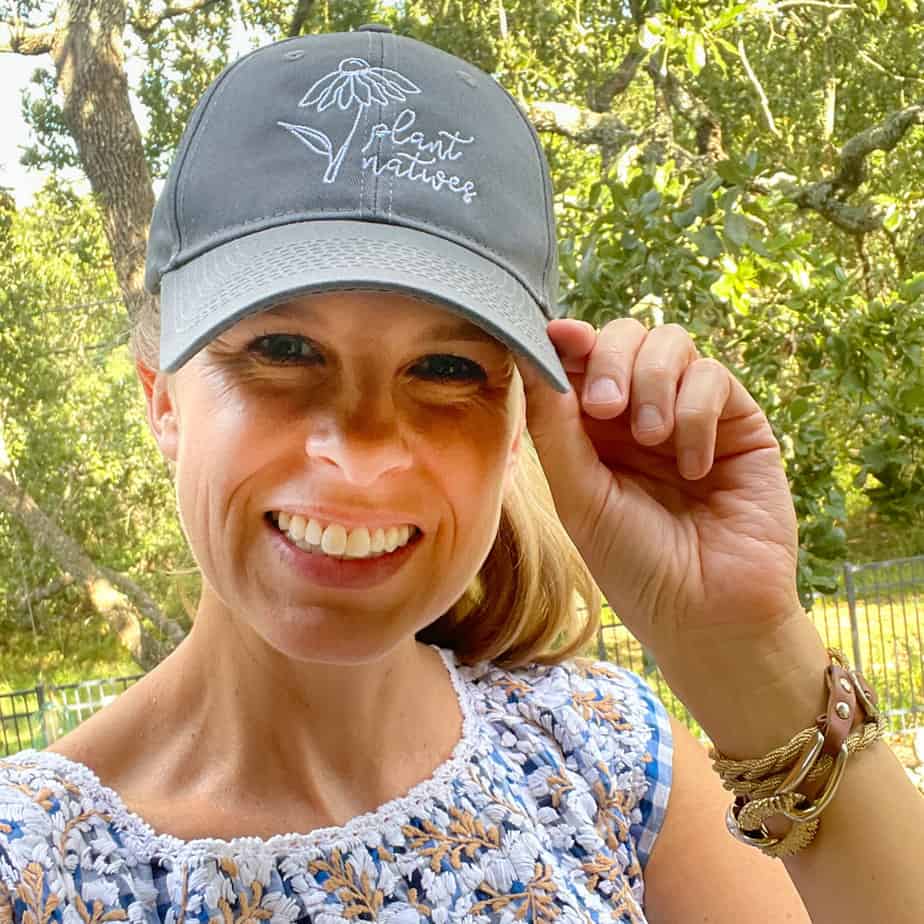
Welcome to Native Backyards! I’m Haeley from San Antonio, Texas, and I want to help you grow more native plants.
I have seen firsthand how the right plants can bring your yard to life with butterflies, bees, and birds. I’ve transformed my yard with Texas natives and I’m excited to share what I’ve learned with you.
Join my newsletter here! – each week I’ll send you helpful tips to make your native plant garden a reality!
Want to learn more about me and my garden? Check out my About page!

